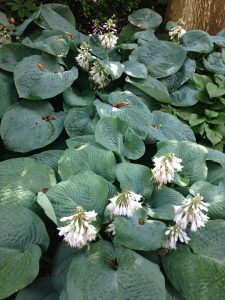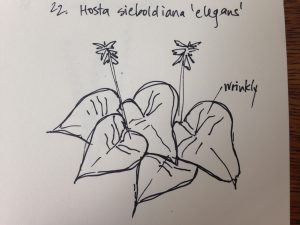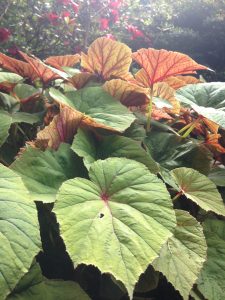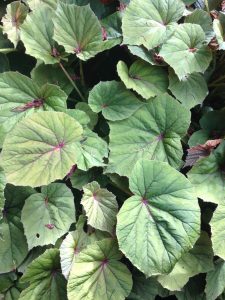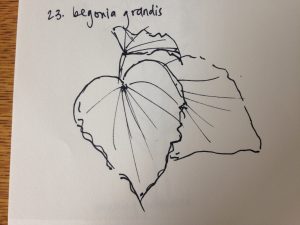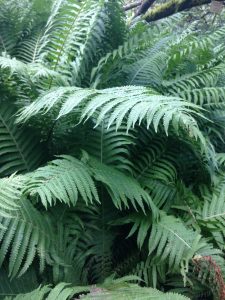
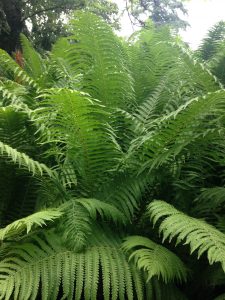
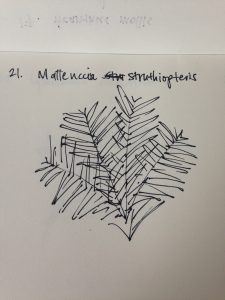
Common name: ostrich fern
Size, form, texture: height 3-6 ft, spread 6-8 ft, large clumping dimorphic fern, spore bearing.
Hardiness, origin, native ecology: part to full shade, wet shade with constant moisture, native to Europe, Eastern Asia, and Eastern North America.
Bud, foliage, flower and fruit characteristics: lateral leaflets not totally separated, pinnately compound, source of edible fiddleheads, lush green foliage with spores on back, non flowering plants.
Cultural and maintenance requirements and appropriate uses in the landscape: a good planting with blue Himalayan poppies in front in border with ostrich fern behind, best in shade gardens, naturalized gardens or near ponds or waters edge. Nice in mass, plant with early spring flowers so that when they die down fern will be reaching full size and will bend over spent flowers. Combines well with hosts and astilbes.
